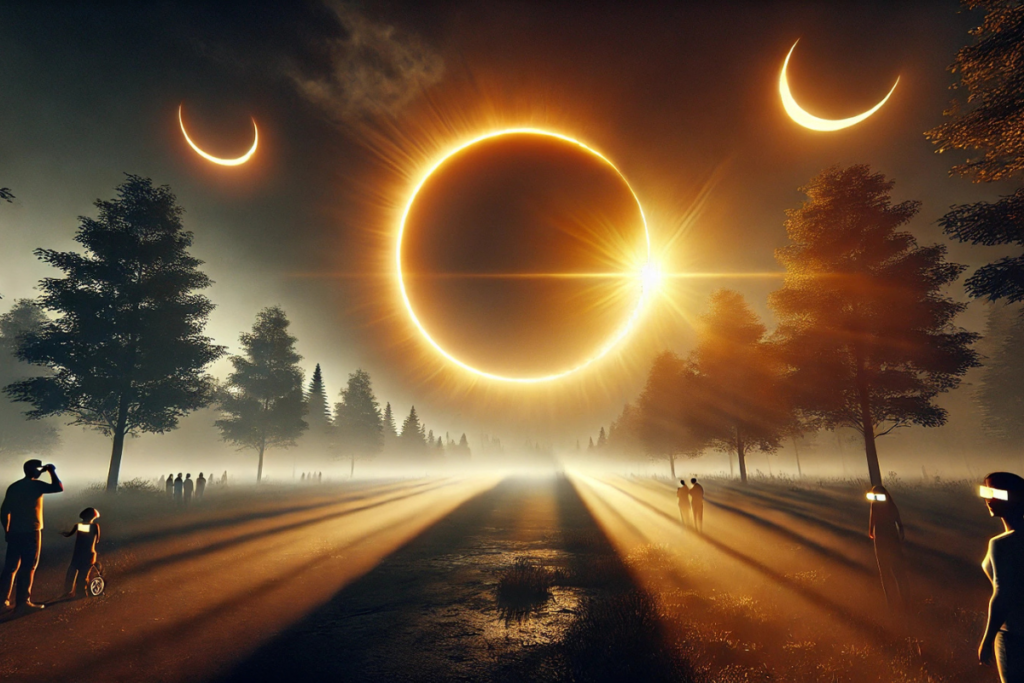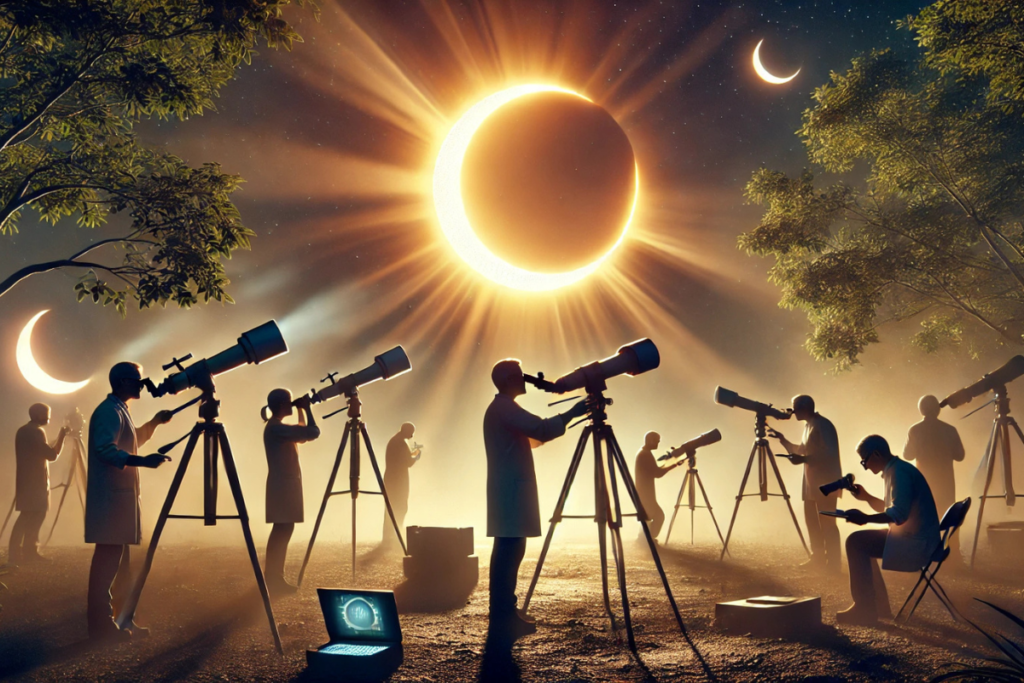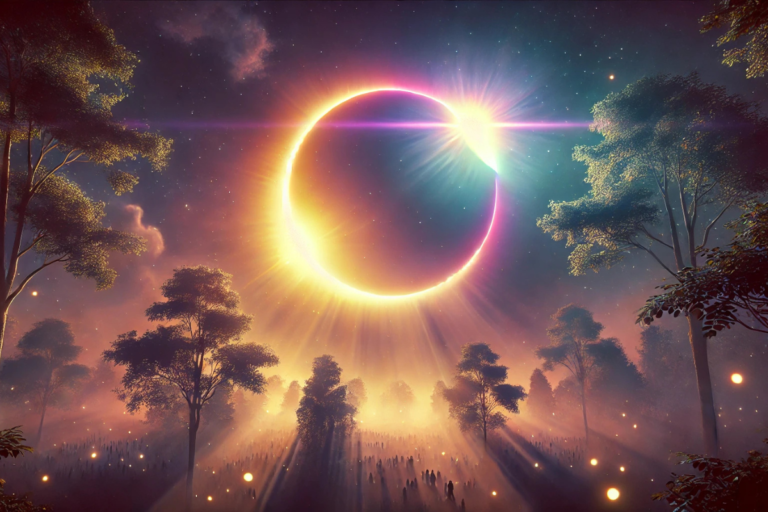Introduction to Solar Eclipses
Solar eclipses are amazing natural events. They happen when the Moon moves between the Earth and the Sun, blocking the sunlight. This can create a shadow on Earth. Depending on how much of the Sun is covered, there are three main types of solar eclipses: total, partial, and annular.
A total solar eclipse occurs when the Moon completely blocks the Sun. During this time, the day turns dark, and the Sun’s corona becomes visible. An annular solar eclipse happens when the Moon covers the center of the Sun but leaves a glowing ring of light. A partial solar eclipse occurs when the Moon blocks only part of the Sun, leaving the rest visible.
A 90 percent solar eclipse is a type of partial solar eclipse. In this event, the Moon covers 90 percent of the Sun. The remaining sunlight creates a dim but beautiful glow. This kind of eclipse is not as dark as a total eclipse, but it is still a fascinating experience.
The Significance of Partial Solar Eclipses
Partial solar eclipses, including a 90 percent solar eclipse, are important because they allow people to study the Sun safely. Scientists use these events to learn more about the Sun’s atmosphere and surface. They also give everyone a chance to witness how the Sun, Moon, and Earth align.
For many people, a 90 percent solar eclipse is exciting because it is rare and beautiful. Even though the Sun is not fully blocked, the sky looks different, and shadows appear sharper. Animals and plants can also behave differently during this time, thinking it is late evening.
A 90 percent solar eclipse is a special event. It is easy to enjoy and observe with proper safety measures. People from all walks of life can appreciate the beauty of the cosmos during this natural wonder.
Experiencing a 90 Percent Solar Eclipse
A 90 percent solar eclipse creates remarkable changes in the environment. As the Moon covers most of the Sun, the sunlight fades, making the day feel dim and surreal. Shadows become sharper and more distinct, often appearing as crescent shapes when filtered through tree leaves or other small openings. This natural light display is fascinating to observe and adds to the beauty of the event.
The temperature during a 90 percent solar eclipse can drop noticeably. Many people describe feeling a sudden chill in the air, and a light breeze often accompanies this cooling effect. Animals may behave differently, with birds becoming quiet and some nocturnal creatures thinking it is time to wake up. The sky takes on a twilight-like glow, creating an almost magical atmosphere.
A 90 percent solar eclipse is different from a total solar eclipse in several ways. In a total eclipse, the Moon completely covers the Sun, and the sky becomes as dark as night. The Sun’s corona, or outer atmosphere, forms a glowing ring that is visible only during totality. This creates a dramatic and awe-inspiring experience that cannot be matched.
During a 90 percent eclipse, the Sun is not fully covered, so the sky does not go completely dark. Instead, the light fades significantly but still remains. While total eclipses are more dramatic, a 90 percent solar eclipse is easier to witness and still offers a rare and beautiful opportunity to observe the alignment of the Sun, Moon, and Earth. Both types of eclipses are unforgettable, each with its own unique charm.

Observing a 90 Percent Solar Eclipse Safely
A 90 percent solar eclipse is an incredible sight, but it’s important to prioritize safety while observing it. The Sun’s rays, even during an eclipse, can cause permanent eye damage if viewed without proper protection. Following safety guidelines ensures you can enjoy the event without risking harm.
Using solar viewing glasses is the safest way to watch a solar eclipse. These glasses are specially designed to block harmful ultraviolet, visible, and infrared radiation. Regular sunglasses, no matter how dark, are not safe for eclipse viewing. Solar filters for telescopes or cameras are also essential if you plan to capture the event. Always make sure that these filters meet international safety standards.
Safe viewing practices are just as important. Never look directly at the Sun without proper eye protection, even if only a small portion of it is visible. If you don’t have solar viewing glasses, consider using indirect methods like a pinhole projector. This simple device allows you to see the Sun’s image projected onto a surface, making it completely safe to observe.
There are several misconceptions about eclipse safety that can lead to dangerous practices. One common myth is that it’s safe to look at the Sun during a partial eclipse because it appears dimmer. This is false; even a small amount of visible sunlight can damage your eyes. Another misconception is that watching through a smartphone or camera screen is safe without a solar filter. In reality, the screen does not fully protect your eyes.
Historical Instances of 90 Percent Solar Eclipses
Throughout history, 90 percent solar eclipses have captivated people worldwide. These events, while not as dramatic as total eclipses, offer unique opportunities for observation and scientific study. Many notable partial eclipses have occurred, leaving lasting impressions on those who witnessed them.
One remarkable instance was the partial solar eclipse on August 21, 2017, which was widely visible across North America. While many experienced the total eclipse within the “path of totality,” millions outside this path observed a partial eclipse, with some regions witnessing up to 90 percent coverage. The event drew large crowds equipped with solar glasses, cameras, and telescopes, making it one of the most well-documented eclipses in history.
Another significant partial eclipse occurred on January 4, 2011, visible across parts of Europe, North Africa, and Central Asia. In many areas, the Sun was over 90 percent covered, creating dramatic lighting effects and cooler temperatures. These observations helped scientists and enthusiasts study the interactions between the Sun, Moon, and Earth in real time.
The impact of 90 percent solar eclipses on daily life and technology has also been notable. For example, during such eclipses, solar power generation can drop significantly. This effect was observed in Europe during the March 20, 2015, partial solar eclipse. Countries heavily reliant on solar energy experienced a temporary but dramatic decrease in power output, prompting utilities to plan for energy storage and alternative sources.
Eclipses can also influence routines and behaviors. Farmers, for instance, have noted changes in livestock activity during these events, as animals often respond to the dimming light and cooler temperatures by preparing for nightfall. People, too, are drawn to the outdoors, setting aside their daily routines to experience the celestial event.
90 percent solar eclipses are more than just beautiful phenomena. They are moments of global fascination that bring people together, highlight the effects of celestial alignments, and underscore humanity’s curiosity about the universe. Each instance adds to our understanding of the cosmos and leaves a lasting impression on those who experience it.
Scientific Insights from Partial Solar Eclipses
Partial solar eclipses, including those with 90 percent coverage, provide scientists with valuable opportunities to study the Sun and its impact on Earth. While they may not offer the dramatic views of total eclipses, these events still allow researchers to gain important scientific insights.
One of the key areas of study during a partial eclipse is the Sun’s corona, which is the outermost layer of the Sun’s atmosphere. Although the corona is best observed during a total eclipse, partial eclipses with significant coverage, like a 90 percent eclipse, create conditions that can still reveal details about solar activity. Specialized equipment, such as telescopes with solar filters, is used to study solar flares, prominences, and other dynamic features of the Sun’s surface and atmosphere.
Atmospheric effects during partial eclipses also interest scientists. As the Moon blocks most of the Sun’s light, the sudden drop in temperature and light intensity can affect weather patterns, wind behavior, and even cloud formation. Researchers use these moments to study how rapid changes in sunlight influence the Earth’s atmosphere and ecosystems. For example, scientists have recorded how plants and animals react to the dimming light, providing insights into biological rhythms.
Partial eclipses also make significant contributions to solar research and understanding. They allow scientists to refine models of the Sun-Earth-Moon system and test instruments designed for solar observation. Past eclipses have helped improve our knowledge of solar radiation, the Sun’s magnetic field, and its impact on Earth’s climate. These studies are critical for understanding long-term changes in solar activity and their influence on our planet.

Preparing for Upcoming Solar Eclipses
Witnessing a 90 percent solar eclipse is an unforgettable experience, and preparation is key to enjoying it fully. Many future eclipses will offer high-percentage partial coverage, providing a chance to observe this rare phenomenon. For instance, the solar eclipse on April 8, 2024, will be visible across North America. While some areas will experience totality, regions just outside the path of totality will see the Sun 90 percent covered by the Moon. Cities like Chicago, Indianapolis, and Austin are among those expected to experience this remarkable sight. Keeping track of dates and locations through reliable sources like NASA ensures you don’t miss such opportunities.
Planning for a 90 percent solar eclipse begins with choosing the right viewing spot. Open areas with a clear view of the sky, away from tall buildings or trees, provide the best visibility. Checking weather conditions ahead of time helps avoid disappointment due to cloud cover. A clear, unobstructed view is crucial for observing the partial eclipse in all its beauty.
Safety should always be a priority when preparing for an eclipse. Solar viewing glasses are a must for protecting your eyes while looking at the Sun. For those interested in photography or using telescopes, solar filters are essential to prevent damage to both your equipment and your vision. Many astronomy clubs and online communities share tips and recommendations for capturing the event safely and effectively.
Educational resources can enhance your experience of a 90 percent solar eclipse. Websites like NASA and local observatories often provide live streams, guides, and interesting facts about the event. Joining community gatherings or workshops organized by astronomy enthusiasts can also enrich your understanding. Whether you’re an experienced observer or a first-time viewer, proper preparation ensures that you make the most of this spectacular celestial event.
Conclusion
A 90 percent solar eclipse is a fascinating event that offers a glimpse into the alignment of the Sun, Moon, and Earth. While not as dramatic as a total eclipse, it provides unique visual and environmental changes, scientific insights, and a chance for people around the world to experience the wonders of our solar system. From the dimming light and cooler temperatures to the sharp crescent-shaped shadows, every aspect of this celestial event is a reminder of the universe’s beauty and complexity.
Whether you are observing safely with solar glasses, studying the Sun’s effects on Earth, or simply enjoying the moment with friends and family, a 90 percent solar eclipse is a rare opportunity to connect with the cosmos. With proper preparation and awareness, these eclipses can leave a lasting impression and inspire awe for generations to come. By embracing the science and splendor of these events, we gain not only memorable experiences but also a deeper appreciation for the natural world.
Thank you for visiting our Blog! For more engaging content, please check out the related category.
